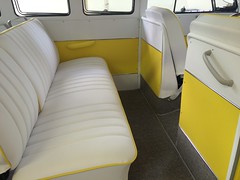UberConf 2015: My Presentations on Apache Camel and Java Webapp Security
Last week I had the pleasure of speaking at UberConf 2015. My first talk was on Developing, Testing and Scaling with Apache Camel. This presentation contained an intro to Apache Camel and a recap of my experience using it at a client last year. You can click through the presentation below, download it from my presentations page, or view it on SlideShare.
My second presentation was about implementing Java Web Application Security with Java EE, Spring Security and Apache Shiro. I updated this presentation to use Java EE 7 and Jersey, as well as Spring Boot. I used Spring Boot to manage dependencies in all three projects, then showed the slick out-of-the-box security Spring Boot has (when you include the Spring Security on the classpath). For Apache Shiro, I configured its filter and required dependencies using Spring's JavaConfig. You can click through my security presentation below, download it from my presentations page, or view it on SlideShare.
One thing that didn't make it into the presentation was the super-helpful pull request from Rob Winch, Spring Security Lead. He showed me how you can use basic and form-based authentication in the same app, as well how to write tests with MockMvc and Spring Security's Testing support.
The next time I do this presentation (at the Rich Web Experience), I'd like to see if it's possible to use all-Java to configure the Java EE 7 example. I used web.xml in this example and the Servlet 3.0 Security Annotations might offer enough to get rid of it.
All the demos I did during the security presentation can be seen in my java-webapp-security-examples project on GitHub. There's branches for where I started (javaee-start, springsecurity-start and apacheshiro-start) as well as "complete" branches for where I finished. The complete examples should also be in-sync with the master branch.
If you have any questions about either presentation, please let me know.



